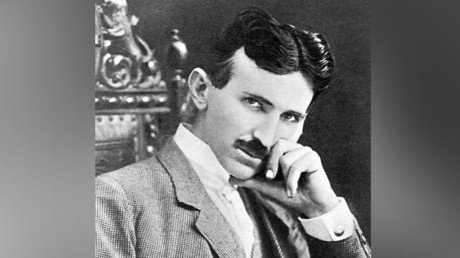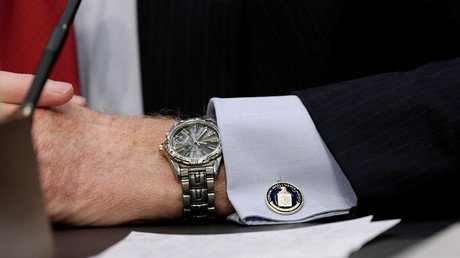CIA files reveal US ties with Argentina during ‘Dirty War’ despite knowledge of human rights abuses

Newly declassified files including documents from the CIA and the US Secretary of State reveal details of targets for “liquidation” during Operation Condor in Argentina, and provide insight into US relations with Argentina’s former military dictatorship.
Some 500 pages of documents have been released by the US government as part of the Argentina Declassification Project to shed light on human rights abuses in Argentina during the period of the so-called “Dirty War” by military dictatorships from the mid-1970s to the mid-1980s.
During a visit to Argentina in March, President Obama announced on the 40th anniversary of the military coup that his administration would declassify documents from its military and intelligence services relating to Argentina’s 1976-83 military dictatorship.
More than 4,000 State Department Cables and other documents were released by the US government in 2002, however this is the first time that CIA or FBI documents relating to the matter have been published.
The first round of declassified documents, made up of 1,000 records, were released in August 2016. This second, smaller, tranche has been described as “much more substantial” by National Security Archive director Carlos Osorio.
More documents will be released next year, and will include previously withheld information from the Department of State’s 2002 declassification project as well as the publication of the 1977-1981 Foreign Relations of the United States South America volume.
The Argentine military seized power in 1976 during a coup d’etat and waged what was known as the “Dirty War” until 1983. During this time, it participated in Operation Condor along with military dictatorships in Bolivia, Chile, Paraguay and Uruguay and Brazil in a coordinated campaign to eradicate communist influence and suppress those opposed to the right-wing governments.
Thousands of left-wing activists were kidnapped and killed in the South American countries – the exact number is unclear due to the clandestine nature of the program.
These newly released documents reveal how much the US actually knew about the campaign of state terrorism being carried out, as well as greater details of Operation Condor and its targets.
Amnesty International officials among overseas ‘liquidation’ targets
A CIA report from 1977 reveals that Amnesty International and other human rights groups were targeted in multinational efforts to “liquidate” opponents of the regimes.
Overseas missions were planned for Paris and London with the aim of “liquidating top level terrorist leaders.”
“Non-terrorists also were reportedly candidates for assassination, Uruguayan opposition politician Wilson Ferreira Aldunate, if he should travel to Europe, and some leaders of Amnesty International were mentioned as targets.”
The CIA also wrote that an inside source revealed “a training course was held in Buenos Aires for the team heading overseas,” and that one possibility was to send a team of Condor leaders to London, disguised as businessmen, to monitor “suspicious” activities in Europe.
An earlier document from the State Department's Bureau of Intelligence and Research dated July 22, 1976, reported the Southern Cone nations had agreed "to undertake the liquidation of Latin American" targets "living in France."
Torture methods
A National Security Council memorandum sent to President Jimmy Carter's national security advisor, Zbigniew Brzezinski, in August 1978 revealed details of the torture of Alfredo Bravo, the president of Argentina’s Permanent Assembly for Human Rights.
Bravo was "subjected to a bucket treatment where his feet were held in a bucket of ice water until thoroughly chilled and then shoved into a bucket of boiling water." He was also given electrical shocks and was held underwater until he almost drowned.
A 1978 Department of State report from the US Embassy in Buenos Aires revealed more details of the serious mistreatment of prisoners as well as reports on a new drug being used on supposed terrorists and subversives “selected for elimination.”
The embassy wrote that a reliable source told them that a powerful anesthetic, ketalar, was being “administered in an intramuscular injection to the prisoner as a preventative health measure,” resulting in the rapid loss of consciousness. The source claimed the subjects were then disposed of in rivers or the ocean.
An Argentine naval officer, Adolfo Scilingo, who was convicted of crimes against humanity for his role in the dictatorship testified in 2005 that up to 2,000 people were killed during weekly “death flights” carried out in 1977 and 1978.
US loans to Argentina
The US went back on its decision not to finance equipment exports for the Yacreta Dam project due to human rights concerns in light of apparent concerns that Argentina would look to Moscow for financial assistance.
A “Top Secret” President’s Daily Brief from July 19, 1978 concluded that "Argentine willingness to turn to the Communists on economic grounds is likely to increase if the US Congress denies supplier credits through the Export-Import Bank of approximately $800 million for US exports to Argentina."
In September 1978, Vice President Walter Mondale and Junta head Rafael Videla agreed that the EXIM Bank loans would go ahead and in exchange the Argentines would allow the Interamerican Human Rights Commission to visit in 1979.
US interests and relations with Argentina
The newly-released files show the US was well-informed on human rights abuses taking place – but were also mindful of their own interests in Argentina.
The US interests listed in a Department of State record includes nuclear non-proliferation (stating that Argentina had the most advanced nuclear weapons prospects in the region) and petroleum (noting Argentina was estimated to hold more than double the existing proved reserves in the western hemisphere).
A profile on the then Argentinian Minister for Economy Jose Alfredo Martinez de Hoz recognized him as “a friend and admirer of the United States.”
“He is honest and straightforward. He has an attractive and unassuming manner and is an excellent public speaker,” states the document from February 1977.
It also reveals that he visited the US in June 1976 on a financial mission and met with then-Secretary of State Henry Kissinger and then-Treasury Secretary William Simon.
It has long been alleged that Kissinger backed Operation Condor. Previously released cables showed that Kissinger told his ambassadors not to confront the military governments over the assassinations and torture.
Martínez de Hoz died at his home under arrest, accused of human rights abuses in 2013. He was the first civilian government official to be held for abuses committed during the dictatorship but never expressed any remorse and denied the accusations.
Another document marked as “top secret sensitive” reported that shortly after the Chilean Secret Service (DINA) was established in early 1974, "Director [Manuel] Contreras came to the United States to seek American assistance." The subsequent lines have been redacted.
In May 2016, former Argentine junta leader Reynaldo Bignone was sentenced to 20 years in prison for crimes committed under Operation Condor. Fourteen other military officers were found guilty by a court in Argentina after a three-year trial.














